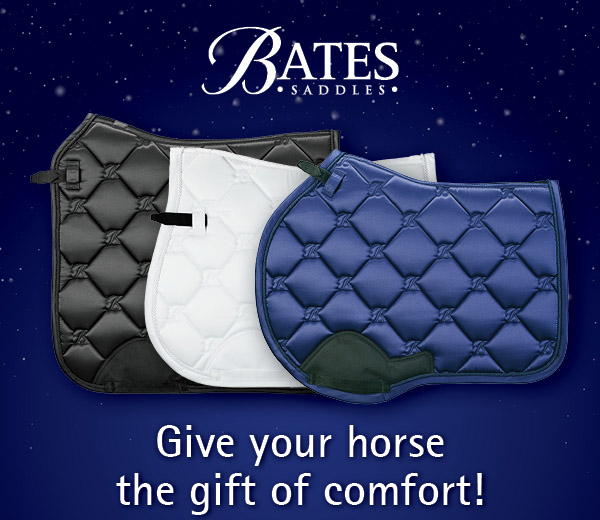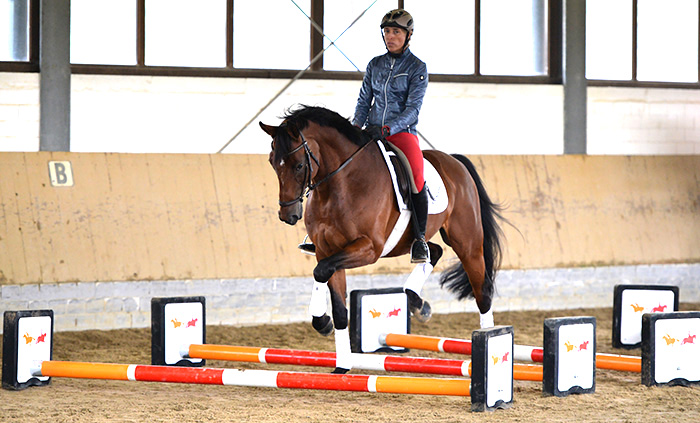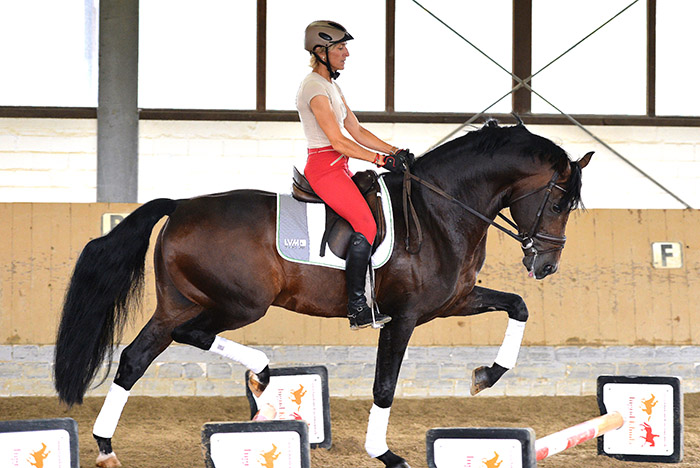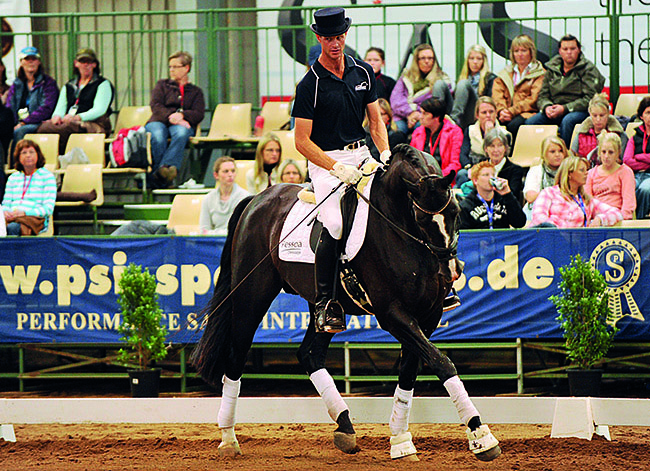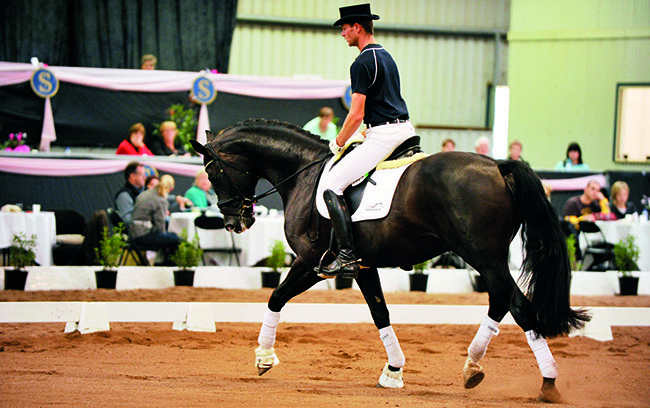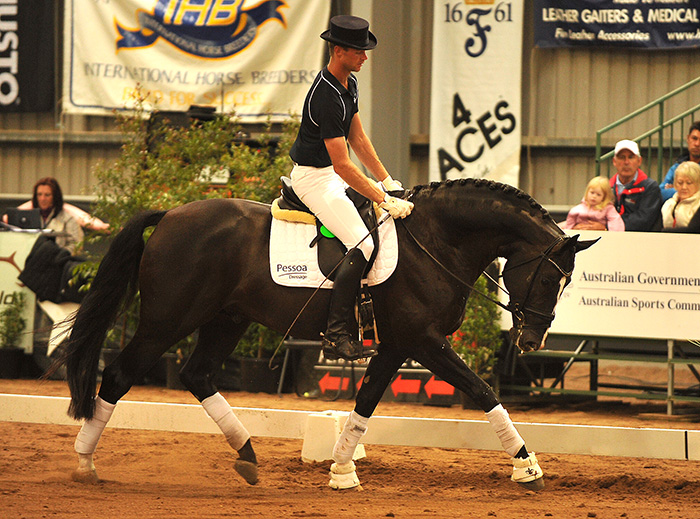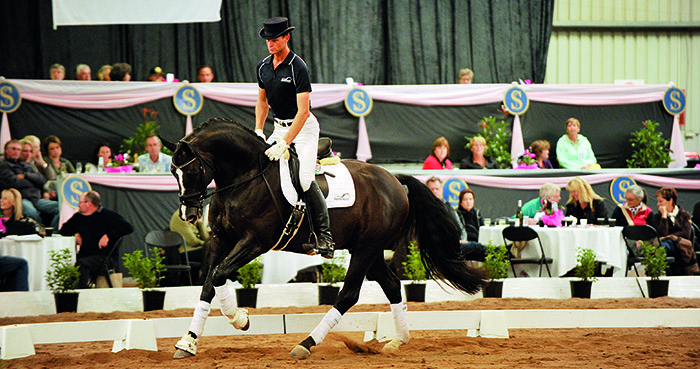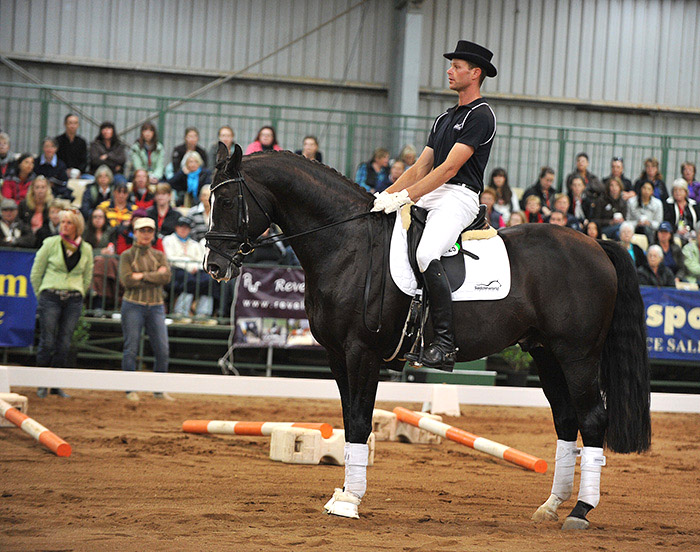Ingrid Klimke shows us the progressive horse-friendly essence of her system: first some images of Ingrid warming up at home using cavalletti: “I like to use cavalletti. I grew up with cavalletti, they were always in our indoor arena, and on the outdoor arena. If you position them beside E or B, they don’t get in the way. You can even ride a Grand Prix test with them there – and you only have to make the circle bigger for the Prix St Georges.”
Bobby and Ingrid working at home with cavalletti
“When I was in Pau, Bobby (Hale Bob) did his best dressage ever, because I was there with one horse for one week, and we put cavalletti on the circle with so many exercises, he was so supple and so smooth and had so much expression in his gaits. I am really convinced that cavalletti works.”
Franziskus demonstrates an energetic hind leg
“The hindlegs must be energetic under the centre of gravity, that means the hindquarters get much more muscle, the back gets so much stronger, and the horse really shows himself. The horse has to have energy from behind, the motor is the hindlegs.”
Ingrid Klimke at a Masterclass working with Australian rider, Deon Stokes, and the stallion Royal Oak, tells us:
“In the beginning we start forward and downward, I don’t want to see a spectacular trot, just active hind legs and the movement going over the back to the rider’s hand. Deon is riding in a snaffle. I like to use the snaffle at home and save the double bridle for the show, but we also have to get the horses used to the double, so we can warm-up in a double at home sometimes.”
“Deon’s horse takes a while to stretch, so he is riding a figure eight, getting both ribs supple. Offer the way down – some horses don’t search for the contact, then you just offer and hope.”
“There he has stretched, pat him, tell him it was right – and you can throw your whip away. You have to be independent of the whip, the horse can feel a fly, they can feel your leg and spur, you don’t need to always ride with the whip. The hands together, near the withers. The horse needs to know where you are, so he can be between your leg and hand, and you can give him support. You work on canter for a while.
“If dressage horses hold themselves and won’t stretch, stand in the stirrups and go for a forward canter, allow them to be a horse. Get rid of the freshness, then back to work. This horse is quite short in the back and if we are not careful, he can look loose but we see from the hindlegs that he is not.”
The stallion makes that brrrrrr sound through his nose. “Great, he is letting something go. Now he is not running, he is on your very quiet leg, now go to long rein walk. Each horse when he starts should look like a four-year-old. Now he is ready for you to pick up the reins and we can start the working phase…”
